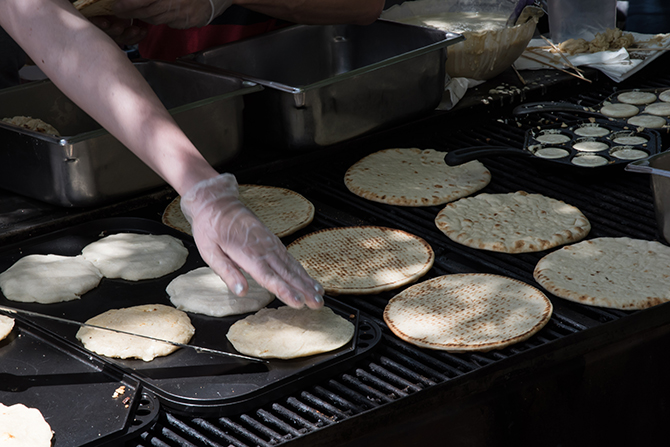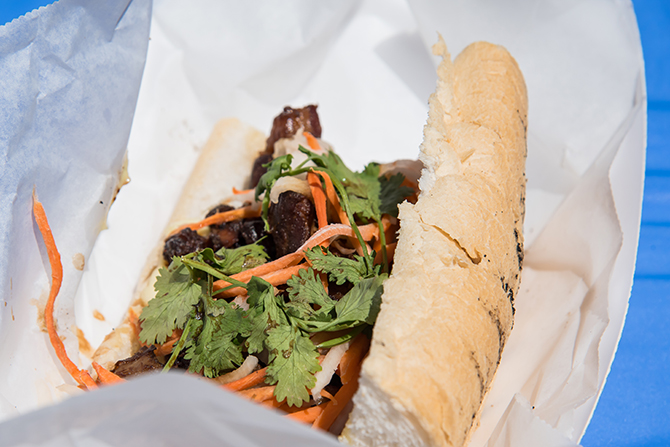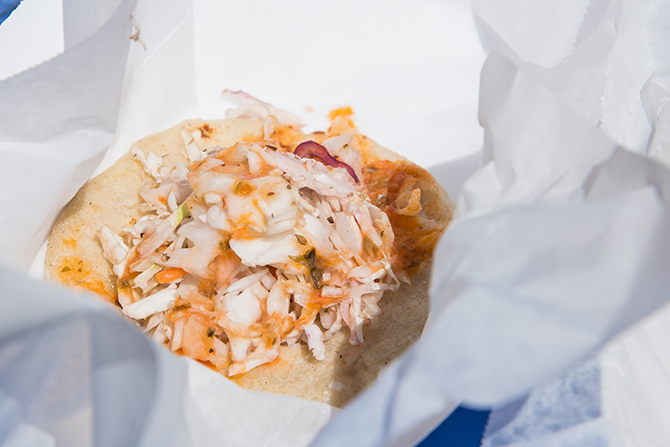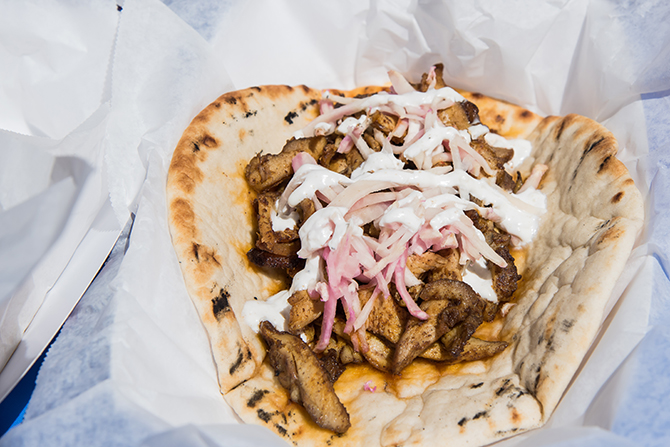Unlike your typical Spring weekend of quiet roads in Athens, Saturday was a day out of the pages of the Fall playbook.
This year marked the 17th Annual International Street Festival which took place in the heart of downtown Athens from 12 pm to 5 pm.
Coinciding with G-Day (the Georgia Football Spring Lettermen’s Game) and hosted by UGA’s own International Student Life, the International Street Festival included cultural displays from over 35 global student organizations with an estimated turnout of 5,000+ visitors.

Photo by Gabi Rosenthal
Broad Street and College Avenue thrived with entertainment from live music to samba dancing. However, the real scene stealers were the multicultural street foods on sale courtesy of UGA Food Services. Although entrance to the festival was free, here’s a guide through the menu for some inspiration on your next taste-traveling adventure:
Banh Mi

Photo by Gabi Rosenthal
Place of Origin: Vietnam
Pronounced “bahn-mee,” this Vietnamese sandwich was invented during the French colonization of Vietnam and is now commonly sold throughout the country as a street food snack.
Typical banh mi fillings include meat (such as seasoned pork belly, Vietnamese sausage, or chicken), an array of vegetables (usually shredded carrots and daikon or cucumber slices), cilantro leaves, and condiments, including mayonnaise, Sriracha, and cheese.
What Made This One Unique: The tender, juicy pork belly paired with the use of both pickled and fresh veggies gave this banh mi a wide range of textures with every bite. Also, utilizing homemade mayonnaise and Maggi sauce can add multiple layers of flavor that go beyond a simple sandwich. (Price: $6)
Check out this recipe to make some yourself.
Pupusa

Photo by Gabi Rosenthal
Place of Origin: El Salvador
Although native to El Salvador, variations of pupusas are found throughout Central America today. Thick corn tortillas are filled with a mishmash of cheese, refried beans, and/or cooked pork meat.
What Made This One Unique: These pupusas included curtido, a type of fermented cabbage slaw, giving them an authentic Latin-American flavor. (Price: $3)
Check out this recipe to make your own.
Aebelskiver

Photo by Gabi Rosenthal
Place of Origin: Denmark
Popular around Christmastime, aebelskivers are often described as a Danish hybrid of pancakes and popovers. Aebelskivers have become so popular and easy-to-make (thanks to custom pans) in recent years that they can commonly be found at charity functions, sporting events, and even at children’s birthday parties. In the United States, aebelskivers can also be found in the international section of the frozen food aisle.
What Made This One Unique: These bad boys stayed true to their Danish roots, from the traditional condiment of red jam on the side to the powdered sugar dusted appropriately on top to the strong cardamom aftertaste. If these babies didn’t transport you to Denmark, no other aebelskiver will! (Price: $2)
Use this recipe to make them at home.
Chicken Shawarma

Photo by Gabi Rosenthal
Place of Origin: Middle East
Dish Description: The term “shawarma” actually refers to the vertically rotating spits found in restaurants that consist of stacks of meat (typically lamb, chicken, turkey, and/or beef) which are sliced off automatically, creating shreds of meat. The shredded meat is directly placed into pita bread and topped with an array of fresh and pickled vegetables. The final touch is a multitude of dressings – traditionally tahini, hummus, and/or skhug (a type of hot chili sauce). Shawarmas are often dubbed as the “Middle Eastern gyro“.
What Made This One Unique: The marinade for the shredded chicken was very much in line with tradition as was the pickled turnips and yogurt sauce. For those who aren’t a huge fan of spicy foods, this particular shawarma was the way to go. (Price: $5)
Check out this recipe to make some yourself.
Want more on festival foods? Check out:


